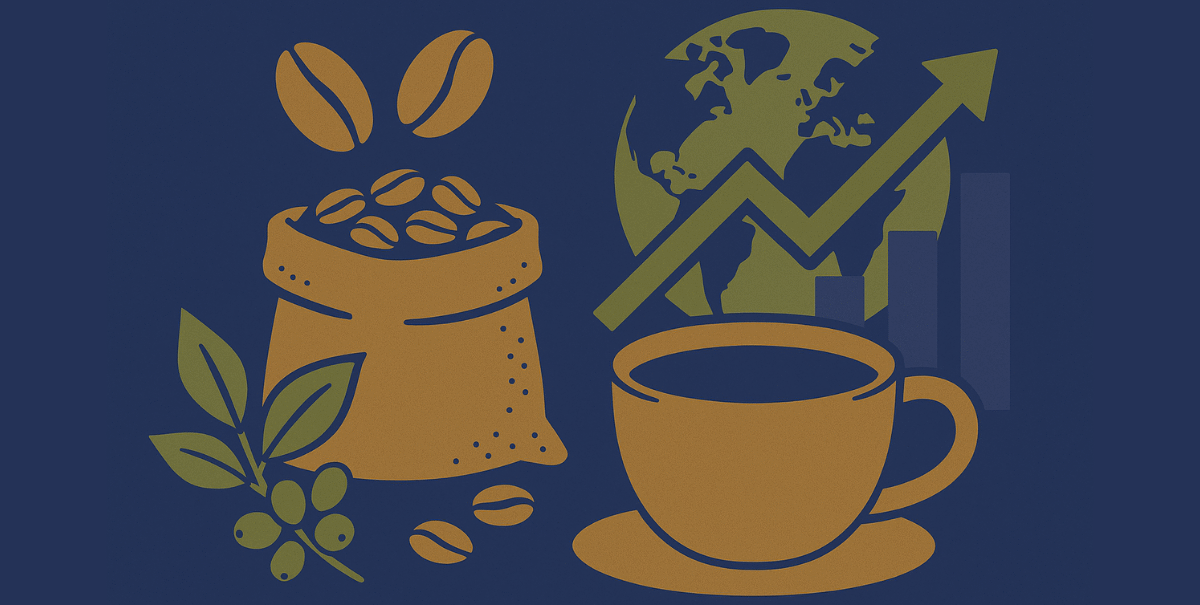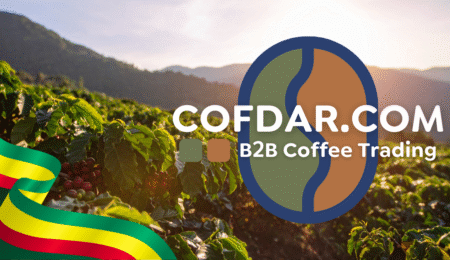Economic Analysis of Price Trends and Export Performance
The global coffee market in July 2025 witnessed a sharp decline in prices, driven by ongoing global economic uncertainty and wide disparities in export performance among producing countries. These fluctuations reflect an unstable supply-demand balance and signal the need for actors across the value chain to reassess their strategies.
1. Price Collapse: Indicator Reflects Market Stress
The ICO Composite Indicator Price (I-CIP) averaged 259.31 US cents/lb, representing a significant 11.8% decrease from June 2025. This downward movement follows a period of relative stability and highlights mounting pressure on the market.
Breakdown by Coffee Type:
- Colombian Milds: Fell by 10.5% to 322.37 US cents/lb
- Other Milds: Dropped 10.4% to 325.50 US cents/lb
- Brazilian Naturals: Down 12.3% to 297.04 US cents/lb
- Robustas: Registered the steepest fall of 14.8% to 167.19 US cents/lb
These declines stem from improved harvest conditions in Brazil, growing global uncertainty due to new U.S. tariffs, and easing supply-demand tensions. Notably, a report by NIESR estimates that current U.S. tariffs could reduce global GDP by 1.1% by 2030 compared to a no-tariff scenario.
2. Futures Markets & Stock Dynamics
- London–New York Arbitrage: Narrowed by 7.2% to 135.74 US cents/lb.
- Volatility: Averaged 10.2% for I-CIP; Robustas peaked at 13.1%.
- Certified Stocks:
- Robusta stocks in London rose 35.8% to 1.18 million bags – the highest since mid-2023.
- Arabica stocks decreased 8.1% to 0.83 million bags.
These figures suggest growing inventory imbalances between coffee types, with potential implications for pricing strategies and contract structures.
3. Export Trends: Uneven Recovery Across Regions
Global green coffee exports reached 10.23 million bags in June 2025, up 3.3% year-on-year. However, total green exports remain 3.0% lower year-to-date compared to the previous cycle.
By Coffee Type:
- Colombian Milds: +9.0%
- Other Milds: +14.8%, led by Nicaragua (+55.2%), Ethiopia, Honduras, Peru, and Uganda
- Brazilian Naturals: -21.3%, reflecting cyclical production in Brazil
- Robustas: +16.9%, driven by Vietnam (+55.4%), Indonesia, and Uganda
By Region:
- Asia & Oceania: +38.6%, led by Vietnam’s recovery
- Africa: +28.1%, with strong output from Uganda and Ethiopia
- South America: -18.1%, primarily due to Brazil’s 31.4% drop
- Mexico & Central America: +18.0%, driven by Nicaraguan rebound
4. Structural Insights Behind Market Movements
Brazil’s Harvest Recovery:
Brazil’s coffee harvest progressed at a faster pace than last year, reaching 84% completion by late July, according to Safras & Mercado. This surplus added downward pressure to global prices.
Global Economic Risk:
New protectionist trade policies in the U.S. created uncertainty in global commodity markets, dampening confidence and potentially reducing demand from institutional buyers.
5. Short-Term Market Outlook
Despite the price plunge, this does not necessarily signal a market collapse. Rather, it reflects a market correction following recent gains. In the coming months, we expect:
- Loose but improving supply-demand balance
- Economic concerns limiting demand growth
- Potential price stabilization if inventories tighten and demand recovers
6. Strategic Recommendations for Coffee Sector Stakeholders
Based on the analysis above, the following strategic recommendations are proposed for industry players across the supply chain:
A. For Exporters and Producers:
- Diversify Export Markets
Focus on high-growth regions such as Asia and Africa to reduce reliance on traditional destinations. - Strengthen Quality Documentation
Use certificates and third-party evaluations to differentiate your coffee in volatile markets. - Implement Dynamic Pricing Models
Given price volatility, avoid rigid long-term contracts and consider adjustable pricing based on market indices. - Monitor Robusta–Arabica Shifts
Robusta inventories are rising while Arabica stocks are falling. This could affect future blend preferences and pricing.
B. For Buyers and Importers:
- Leverage Low Prices for Bulk Purchasing
Now is a good time to secure larger volumes or build buffer stocks, especially for Arabicas with falling availability. - Broaden Supplier Base
Do not depend solely on one region. Explore suppliers from countries with growing export volumes such as Uganda, Ethiopia, and Vietnam. - Stay Informed on Contract Differentials
Understand how differentials between coffee types (e.g., Colombian Milds vs. Robustas) can guide procurement decisions. - Align Procurement with Volatility
Use futures market data and volatility trends to better time purchases or hedge contracts.
7. Final Word: Navigating an Evolving Market
The July 2025 ICO report highlights a pivotal moment for the global coffee sector. While price declines may raise concern, they also offer strategic entry points for buyers and a chance for exporters to reassess their competitiveness.
Market participants must combine agility with data-driven insights to remain resilient in a market shaped by climate, politics, and shifting consumption patterns.





Leave a Reply